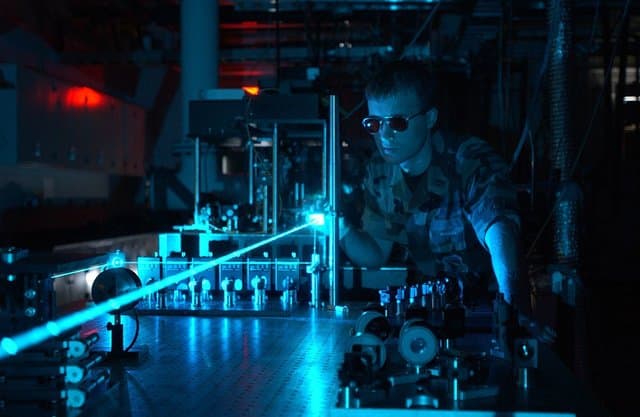Recent Advances In Photonics Could Revolutionize Spectroscopy
A research team from the Northwestern University have developed a single mode quantum cascade laser (QCL), that is capable of producing a high output power and electrical tuning necessary to revolutionize photonics application in telecommunication, chemical research and forensic science. A desirable laser for this application must be widely tunable over strategic spectral regions, have high power and high speed. They achieved such properties by coupling an 'asymmetric sampled grating distributed feedback tunable laser', with an optical amplifier. The developed product is designed in such a way, so that it reduces the cost of the spectrometer, but at the same time, enhances the durability of the system.

Laser experiment Performed in US military Camp
Laser(Light amplification by stimulated emission of Radiation), is an optical source that has remarkably boosted research in fields such as medical technology, telecommunication system, navigation system, lithography, defence and security. From Laser chip cutters to LASIK surgery, LASER has a wide range of applications. According to Manijeh Razeghi, Professor of Electrical Engineering and Computer Science at the Northwestern's McCormick School of Engineering, high power and high efficiency lasers were achieved a long time back, but the real challenge was to achieve an electrically tunable wavelength with a high power output. He explained that to produce a high output power from a single mode semiconductor Laser, an amplifier section must be embedded into the laser waveguide. For this research, the team chose to experiment with different types of oscillator power amplifiers and finally zeroed in on a unique architecture (SGDFB MOPA), in order to achieve the desired result.

Schematic Diagram of SGDFB MOPA
The recent findings are likely to help in the field of 'mid infrared spectroscopy', which has important applications in areas such as forensic science. Infrared spectroscopy is a simple and reliable technique, widely used in both in both research and industry, where it is usually applied in identifying polymer degradation and pigments/paint stains.
The research was funded by the U.S. Department of Homeland Security Science and Technology Directorate, the National Science Foundation, the Naval Air Systems Command and NASA, and the results were published in the American Institute of Physics journal.
The drawback of this new technology(which has the potential to significantly upgrade the science of spectroscopy), is the high cost associated with its implementation. The team is however hopeful that their research will vastly improve the above mentioned technologies, and also open up a new channel to improve the broadband sensing system.
Source: #-Link-Snipped-#

Laser experiment Performed in US military Camp
Laser(Light amplification by stimulated emission of Radiation), is an optical source that has remarkably boosted research in fields such as medical technology, telecommunication system, navigation system, lithography, defence and security. From Laser chip cutters to LASIK surgery, LASER has a wide range of applications. According to Manijeh Razeghi, Professor of Electrical Engineering and Computer Science at the Northwestern's McCormick School of Engineering, high power and high efficiency lasers were achieved a long time back, but the real challenge was to achieve an electrically tunable wavelength with a high power output. He explained that to produce a high output power from a single mode semiconductor Laser, an amplifier section must be embedded into the laser waveguide. For this research, the team chose to experiment with different types of oscillator power amplifiers and finally zeroed in on a unique architecture (SGDFB MOPA), in order to achieve the desired result.

Schematic Diagram of SGDFB MOPA
The recent findings are likely to help in the field of 'mid infrared spectroscopy', which has important applications in areas such as forensic science. Infrared spectroscopy is a simple and reliable technique, widely used in both in both research and industry, where it is usually applied in identifying polymer degradation and pigments/paint stains.
The research was funded by the U.S. Department of Homeland Security Science and Technology Directorate, the National Science Foundation, the Naval Air Systems Command and NASA, and the results were published in the American Institute of Physics journal.
The drawback of this new technology(which has the potential to significantly upgrade the science of spectroscopy), is the high cost associated with its implementation. The team is however hopeful that their research will vastly improve the above mentioned technologies, and also open up a new channel to improve the broadband sensing system.
Source: #-Link-Snipped-#
0
